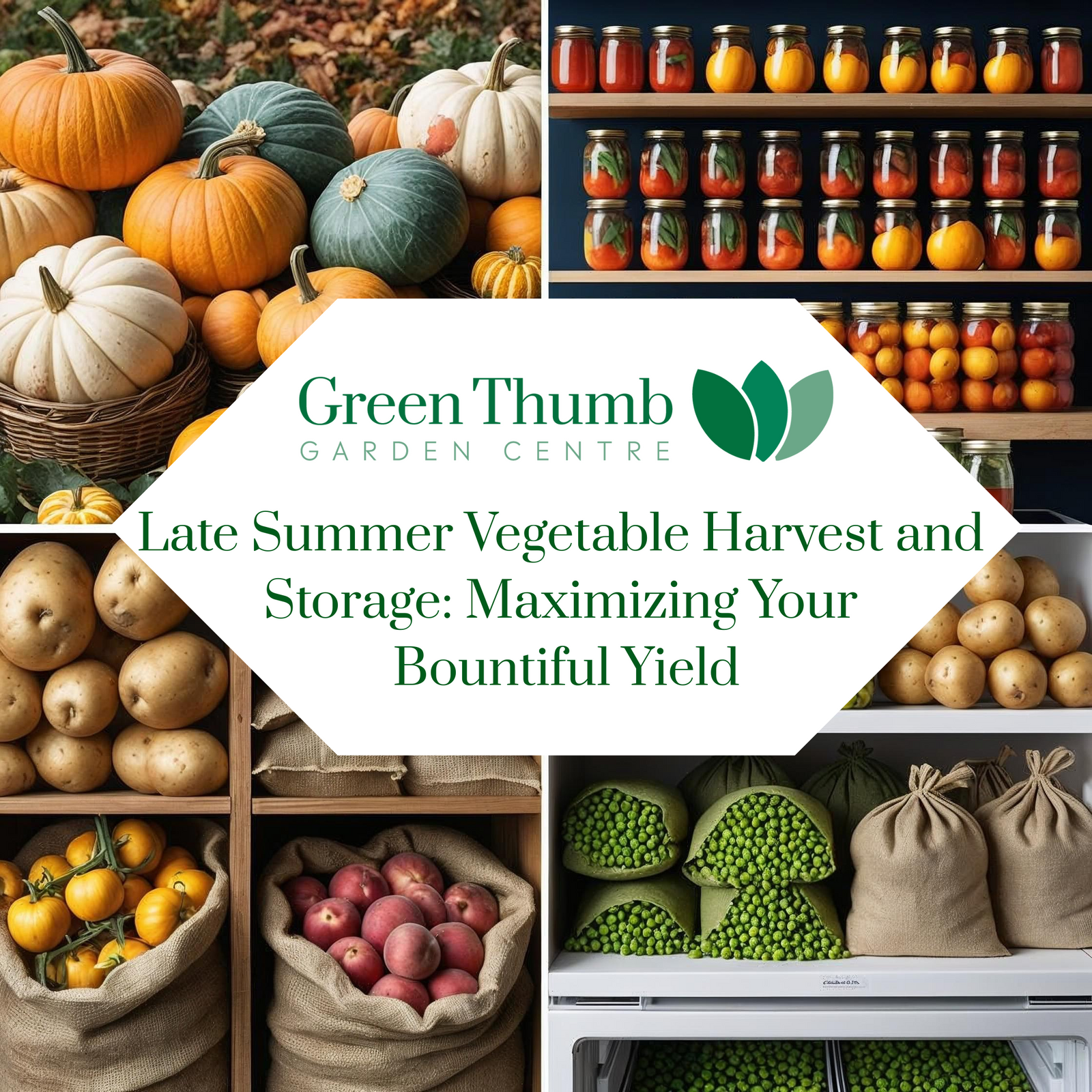As the sun begins its gentle descent towards autumn, late summer brings with it a glorious abundance of vegetables. From plump tomatoes to vibrant peppers and hearty squash, your garden is likely bursting with the fruits of your labor. But what's next after the harvest? Proper storage is key to extending the enjoyment of your homegrown goodness well into the cooler months.
Harvesting for Longevity
The timing and technique of your harvest can significantly impact how long your vegetables will last.
Tomatoes
Harvest tomatoes when they are fully ripe and have developed their characteristic color. Gently twist them from the vine, leaving a small piece of stem attached if possible. This helps to prevent rot.
Peppers
Bell peppers and chili peppers are best harvested when they reach their full size and desired color. Use a sharp knife or pruning shears to cut the stem, leaving a small piece attached.
Cucumbers
Pick cucumbers regularly to encourage more production. Harvest when they are firm, green, and the desired size for their variety. Avoid leaving them on the vine too long, as they can become bitter.
Zucchini and Summer Squash
These prolific producers should be harvested when young and tender for the best flavor. Frequent harvesting also encourages more growth.
Eggplant
Harvest eggplant when the skin is shiny and firm. The size will vary by variety, but generally, they are ready when they are large enough to be substantial but not so large that they become seedy or tough.
Beans
Snap beans and pole beans are ready when the pods are firm and snap easily. For shelling beans, wait until the pods are plump and the beans inside are well-formed.
Root Vegetables (e.g., Carrots, Beets, Potatoes)
Harvest root vegetables when they reach their mature size, but before they become woody or fibrous. Gently loosen the soil around the roots and pull them up by their greens.
Winter Squash (Butternut, Acorn, Spaghetti)
Winter squash varieties are ready for harvest when their skin is hard and resistant to a thumbnail test. Leave a few inches of stem attached to the squash to help with storage and prevent rot.
Storage Solutions for Your Late Summer Bounty
Once harvested, different vegetables require different storage methods to maintain their freshness and flavor.
Short-Term Storage (Refrigeration)
Many late summer vegetables are best stored in the refrigerator for immediate consumption or use within a few days to a week.
- Tomatoes: Store ripe tomatoes at room temperature for optimal flavor. If they are very ripe, you can refrigerate them to slow down further ripening, but bring them back to room temperature before eating for best taste.
- Peppers: Store whole, unwashed peppers in a plastic bag or crisper drawer for up to 1-2 weeks.
- Cucumbers: Store unwashed cucumbers in a plastic bag in the crisper drawer. Use within a week.
- Zucchini and Summer Squash: Store unwashed in a plastic bag in the crisper drawer for 3-5 days.
- Eggplant: Store whole, unwashed eggplant in a plastic bag in the crisper drawer for up to a week.
- Beans: Store unwashed beans in a plastic bag in the crisper drawer for up to 1 week.
Long-Term Storage
For preserving your harvest for months, consider these methods:
Freezing
Freezing is an excellent way to preserve many late summer vegetables, locking in their fresh flavor and nutrients. Most vegetables require blanching (briefly boiling then plunging into ice water) before freezing to stop enzyme action that can degrade quality.
- Tomatoes: Can be frozen whole, chopped, or as a sauce. For whole or chopped, core them and freeze on a baking sheet before transferring to freezer bags.
- Peppers: Slice or chop peppers and blanch for 2-3 minutes. Flash freeze on a baking sheet and then transfer to freezer bags.
- Zucchini and Summer Squash: Grate or slice, blanch for 2-3 minutes, then cool and freeze in desired portions.
- Eggplant: Slice, blanch, and freeze, or blanch and purée for future use in dishes.
- Beans: Trim ends and blanch for 3 minutes. Cool quickly and freeze in freezer bags.
Canning
Canning is a traditional method for preserving vegetables in jars, allowing them to be stored at room temperature for extended periods. This method requires specific equipment and adherence to safety guidelines.
- Tomatoes: Can be canned as whole, crushed, diced, or made into sauces and salsas. Use a water bath canner for high-acid tomatoes or a pressure canner for low-acid varieties.
- Beans: Green beans are often pressure canned.
Drying/Dehydrating
Drying removes moisture, preventing spoilage and concentrating flavors.
- Tomatoes: Sun-drying or using a dehydrator creates delicious dried tomatoes.
- Peppers: Sliced peppers can be dried in a dehydrator or oven for use in spices or rehydrated in dishes.
Root Cellaring/Cool, Dark Storage
Some vegetables thrive in cool, dark, and humid conditions, similar to a root cellar.
- Winter Squash (e.g., butternut, acorn, spaghetti): Allow them to "cure" in the sun for about a week after harvest (this hardens the skin), then store in a cool (50-60°F / 10-15°C), dry place with good air circulation. They can last for several months.
- Onions/Garlic: Cure in a warm, dry place for a few weeks until the outer skins are dry. Then store in a cool, dark, well-ventilated area.
- Root Vegetables (e.g. Carrots, Potatoes, Beets): Store root vegetables in a cool, dark, and humid place. If you don't have a root cellar, a perforated plastic bag in the crisper drawer of your refrigerator can work for shorter periods. For longer storage, consider burying them in damp sand or sawdust in a cool, dark location.
By understanding the best harvesting practices and employing appropriate storage methods, you can savor the taste of your late summer garden long after the season has passed. Enjoy your delicious and bountiful harvest!


